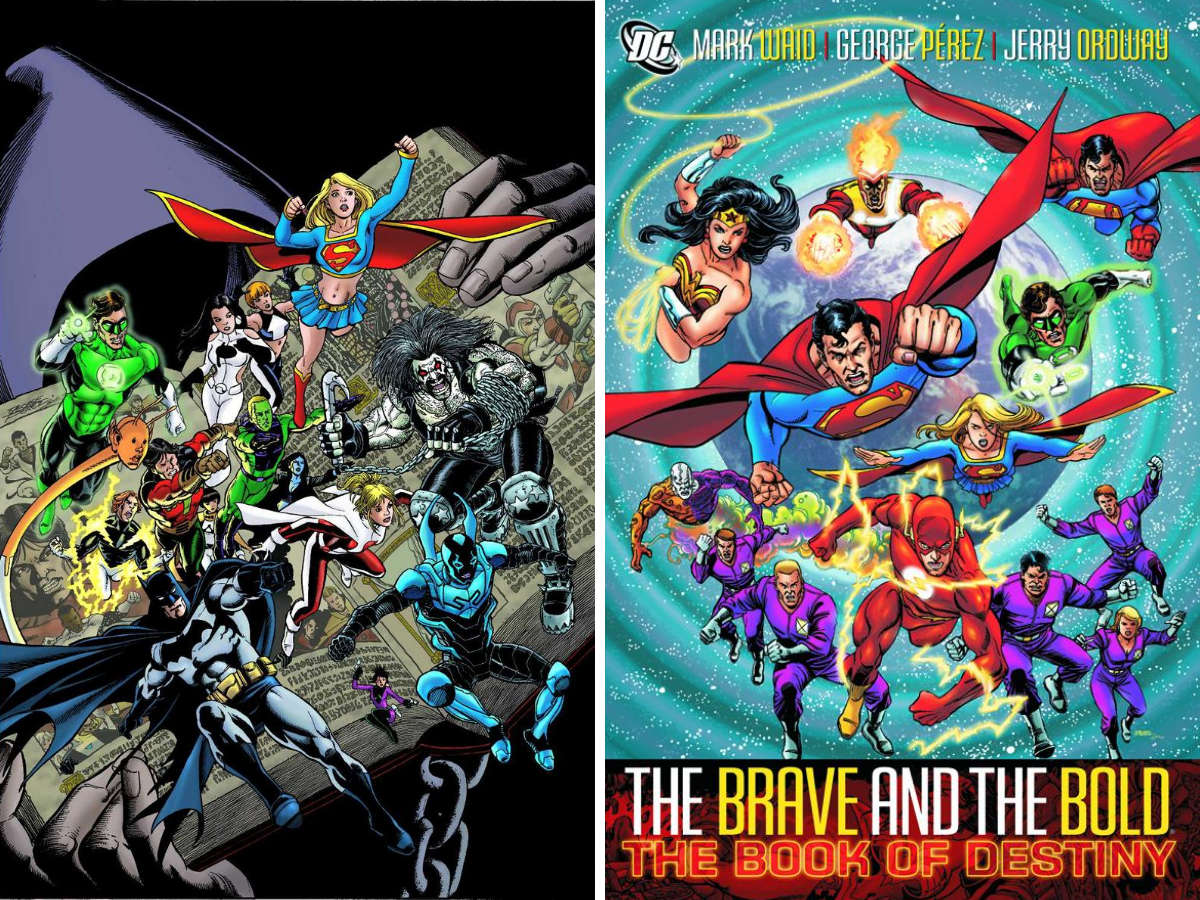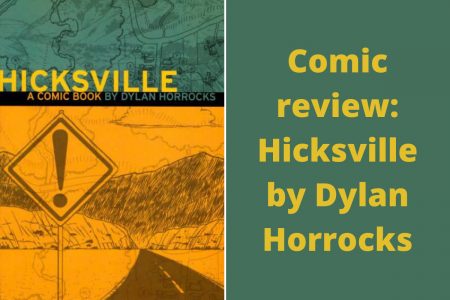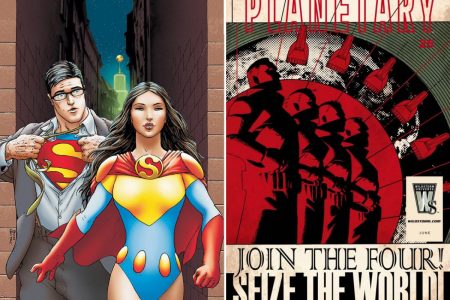The Brave and the Bold: The Lords of Luck (issues 1–6) and The Book of Destiny (issues 7–12) by Mark Waid, George Perez and Jerry Ordway
I like the idea of The Brave and the Bold – a book about superhero team-ups; you can have many different characters (rather than the original, which always had Batman as the co-star) who don’t normally interact come together in adventure. This is the fantasy casting I enjoyed as a youth, and it’s a great way to explore different aspects of the DC universe.
And there is perhaps no better person to guide the reader around the DC universe than Mark Waid, a man who knows and loves every aspect of the DC universe (especially the Silver Age – he’s already written a mini-series about the JLA called The Brave And The Bold) and a writer of skill when it comes to making superheroes work as intelligent entertainment.
There is a problem: the balance between channelling the concept of The Brave and the Bold and just doing a slavish homage to Silver Age comic is tricky. It is this that I feel lies at the root of the topic Waid discussed when bemoaning the book being labelled as ‘fun’ comics because it would be the death knell for it – this book is entertaining and well done but it feels too Silver Age-y at times (there are references to the 1960s Batman series [‘Batteries to power…Turbines to speed’] and Waid annotates the first collection with the background information on where various bits of the book come from and the visual in-jokes by Perez).
The first book starts out strong: Green Lantern finds a corpse in space and needs Batman to help. Via Las Vegas, Green Lantern teams with Supergirl to go to the planet Ventura (which is dedicated to gambling, a process explained well by Waid), while Batman teams up with Blue Beetle to look for a weapon, which leads to Batman being fused with Tharok of the Fatal Five (which is pretty cool) and going to the future of the Legion of Super-Heroes (a team-up that works well and has Batman taking down the LSH). Meanwhile, Supergirl is teamed up with Lobo and they meet Destiny, who has had his book stolen, which leads to the Challengers of the Unknown, who are the only people who are not in the Book of Destiny. The second collection involves the Challengers reading the Book of Destiny – this distances the story somewhat, even if it allows Waid to tell tales of the Silent Knight, the Blackhawks, the original Teen Titans, as he jumps around time with mentions of ‘Megistus’. There is a very good story about the Flash, Linda and their twins visiting Professor Caulder of the Doom Patrol to get help for the kids (Waid knows Wally West very well), but the remaining issues, with the Metal Men, Hawkman and the new Atom among others, don’t excite as they should even with noble heroics and intelligence and sacrifice.
Don’t get me wrong – this is a well-written book that is enjoyable, funny, emanates love for superheroes and fulfils the remit of examining the richness and diversity of the DC universe; Waid brings together a host of characters in an engaging story, a murder mystery that leads into space and the theft of the Book of Destiny, with lots of charm and delightful dialogue between the characters. But it feels like a throwback to older comics, even if it is obviously modern. It doesn’t help that, to me, Perez’s art is old-fashioned – he is an accomplished artist with the ability to draw anything Waid imagines and do it well, filling the pages with detail and characters, but it looks like art from a different age. I don’t need speed lines, splash pages or flashy styles, but the line work has a dated quality that only compacts the Silver Age quality that I think people responded to. And don’t get me started on Ordway’s art on issues 11 and 12, which is blatantly old-fashioned, albeit well crafted – his work looks like a modern artist aping an old artist’s style, except it’s no imitation.
The Brave And The Bold books are not bad comics, nor do they deserve to be mislabelled as ‘fun’ comics that nobody wants. However, it could do with feeling as if they were doing something new and modern instead of playing an old song with new instruments.




